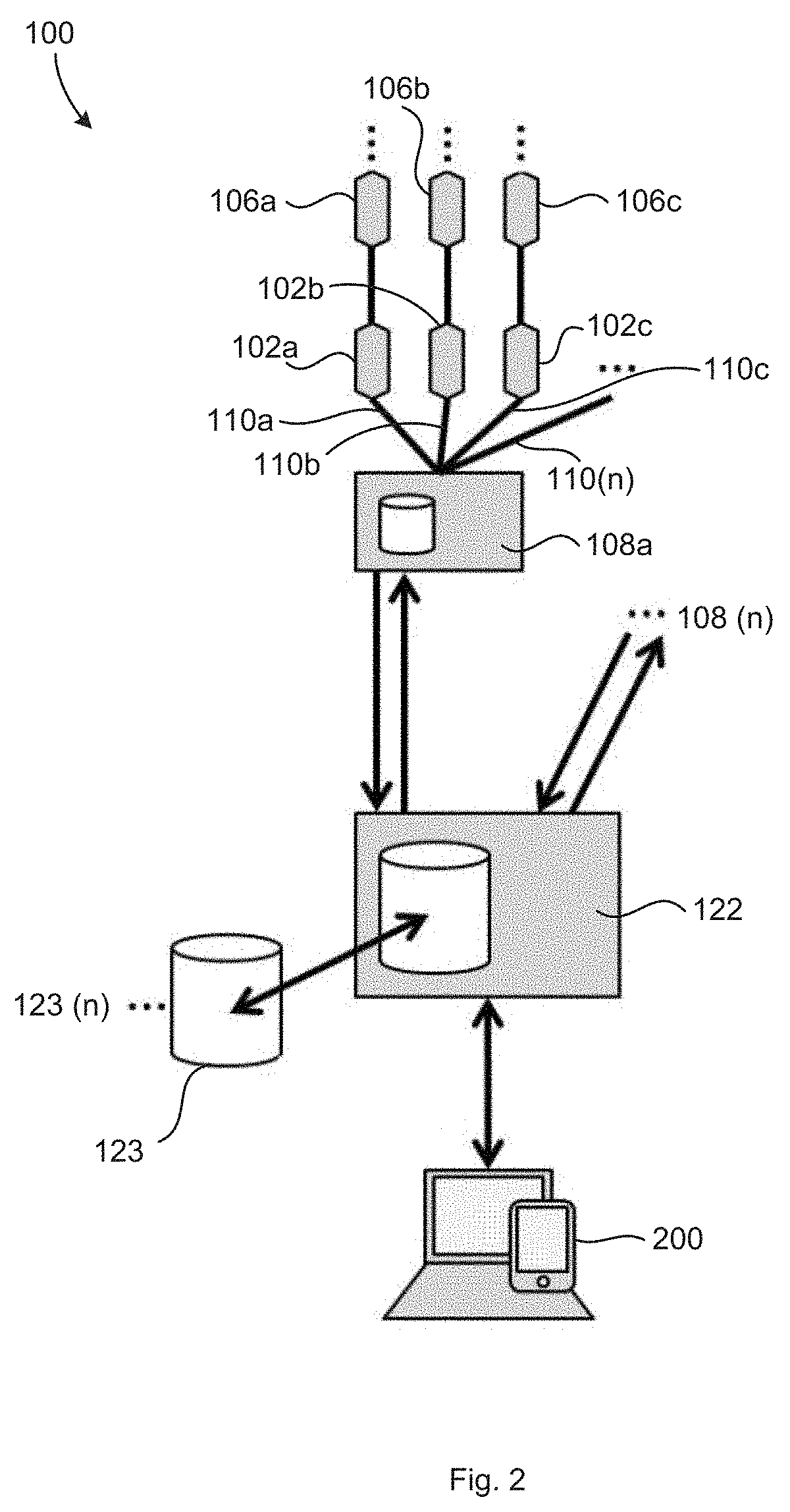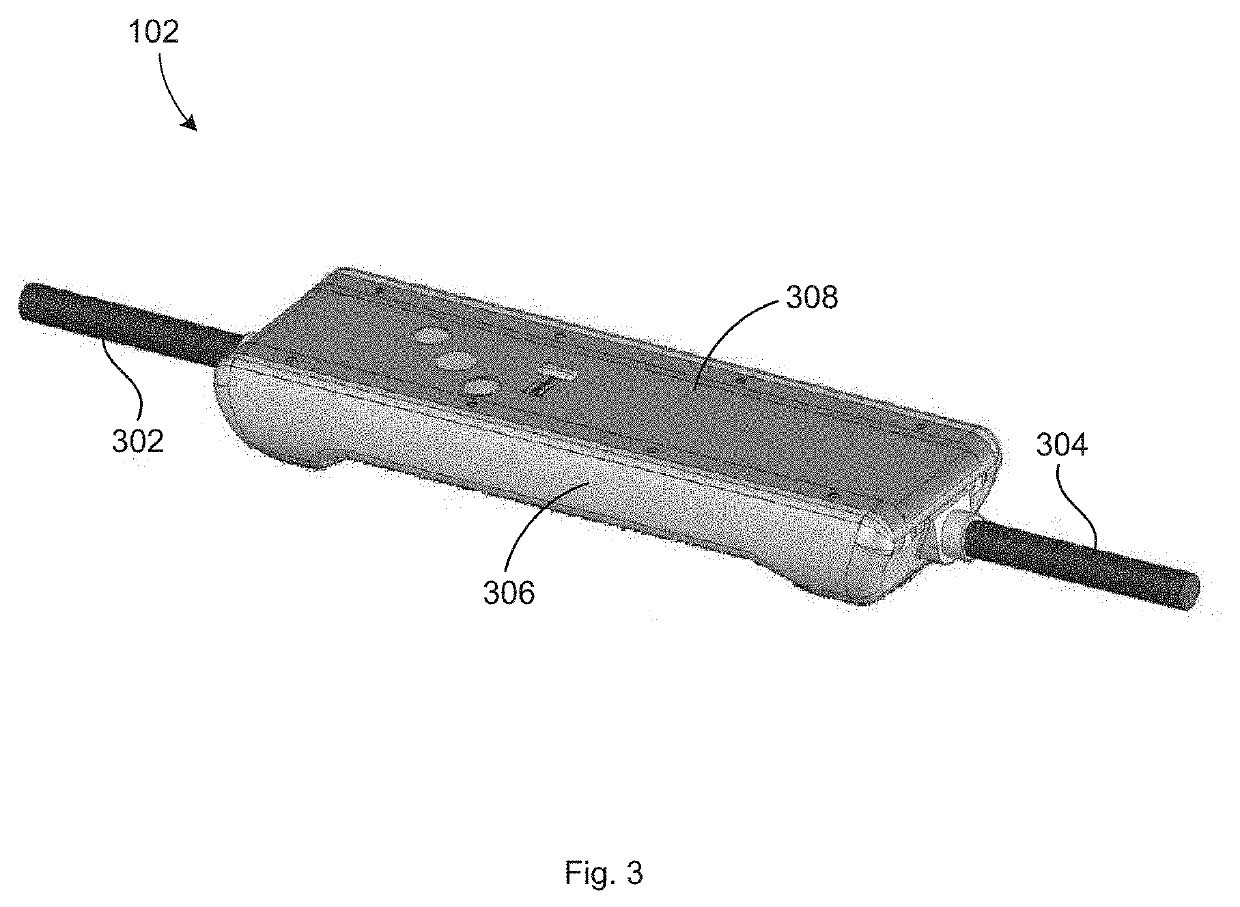System for remote groundwater monitoring
a technology for monitoring systems and groundwater, applied in the field of remote groundwater monitoring systems, can solve problems such as contaminating or degrading aquifers, affecting the safety of users, and affecting the operation of equipment,
- Summary
- Abstract
- Description
- Claims
- Application Information
AI Technical Summary
Benefits of technology
Problems solved by technology
Method used
Image
Examples
Embodiment Construction
[0053]FIG. 1 illustrates a groundwater monitoring system 100 including sensor modules 102a, 102b. Each sensor module 102a, 102b is located in a respective groundwater monitoring well 104a, 104b. In one embodiment, the groundwater monitoring wells are located in or around an in-situ recovery mine site. Two sensor modules 102a, 102b are shown in FIG. 1 for illustrative purposes only. Depending on the application, the monitoring system 100 can have any suitable number of sensor modules 102 based on the total number of groundwater monitoring wells at a particular site. Typically, one sensor module 102 will be deployed in each respective groundwater monitoring well.
[0054]Each sensor module 102a, 102b includes a plurality of solid state sensors and is configured to be submerged underwater to measure multi-parameter sensor data from an aquifer layer of the groundwater monitoring wells 104a, 104b. Typically, each sensor module 102a, 102b includes a plurality of sensors for measuring propert...
PUM
| Property | Measurement | Unit |
|---|---|---|
| depth | aaaaa | aaaaa |
| depth | aaaaa | aaaaa |
| distance | aaaaa | aaaaa |
Abstract
Description
Claims
Application Information
 Login to View More
Login to View More - R&D
- Intellectual Property
- Life Sciences
- Materials
- Tech Scout
- Unparalleled Data Quality
- Higher Quality Content
- 60% Fewer Hallucinations
Browse by: Latest US Patents, China's latest patents, Technical Efficacy Thesaurus, Application Domain, Technology Topic, Popular Technical Reports.
© 2025 PatSnap. All rights reserved.Legal|Privacy policy|Modern Slavery Act Transparency Statement|Sitemap|About US| Contact US: help@patsnap.com



